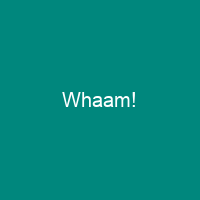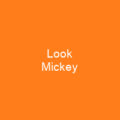Whaam! is a 1963 diptych painting by the American artist Roy Lichtenstein. The left-hand panel shows a fighter plane firing a rocket that, in the right- hand panel, hits a second plane which explodes in flames. It is regarded for the temporal, spatial and psychological integration of its two panels. It has been on permanent display at Tate Modern since 2006.
About Whaam! in brief

He also painted a series of works on war that he worked on between 1962 and 1964, and along with At the Battle of the Bulge, he depicted aerial combat in several works. He eventually settled on an abstract-expressionist style with parodist elements. Around 1958 he began to incorporate hidden images of cartoon characters such as Mickey Mouse and Bugs Bunny into his abstract works. A new generation of artists emerged with a more objective, “cool” approach characterized by the art movements known today as minimalism, hard-edge painting, color field painting, the neo-Dada movement, Fluxus, and pop art. He said he was interested in the highly emotional content yet impersonal handling of love, hate, war, etc., in these cartoon images. His works took heroic romance and war comic-based panels from small source and monumentalized them. He once said that the heroes depicted in comic books are fascist types, but maybe there is a point in taking them seriously in these paintings—maybe there is. He later said that he didn’t use them for purely formal reasons, not for political reasons, but for aesthetic reasons. He has painted many works with an aeronautical theme, including one from the issue of DC Comics’ All-American Jockey No 89-American Comics’ “Star Jockey”
You want to know more about Whaam!?
This page is based on the article Whaam! published in Wikipedia (as of Nov. 03, 2020) and was automatically summarized using artificial intelligence.







